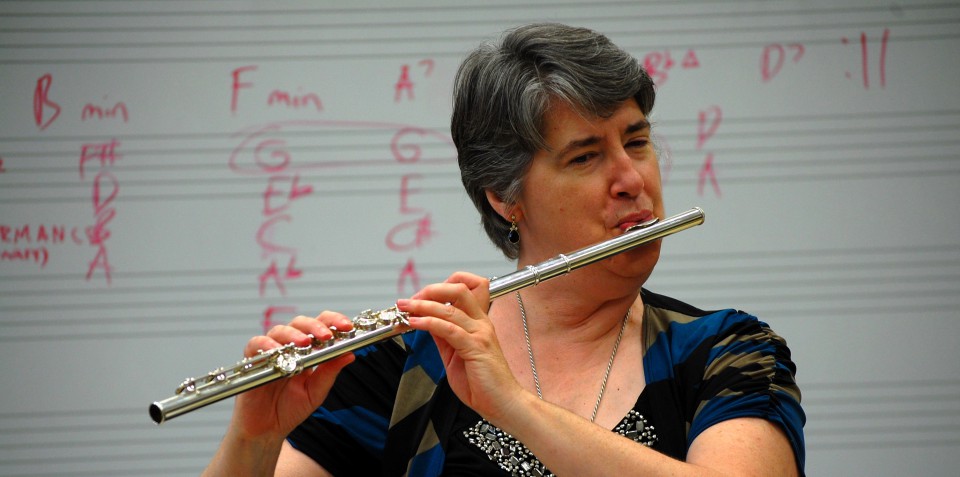It is extremely common for young flute players to play with the flute placed too high on their bottom lip (see the first post, The Legend of Kiss and Roll for more on this issue). Playing this way causes the sound to be thin, shrill and sharp. Another common problem is covering too much, i.e. more than half, of the blow hole with the bottom lip. This will cause the sound to be dull, pinched and flat. Another kind of weirdness I have observed with some kids is that they are not supporting the flute against their bottom teeth. This will also cause flatness and problems playing third octave notes at all. And lastly, for now, pulling corners when shaping the blowing aperture with the lips also causes sharpness. To quote Suzanne Duffy’s comment on this blog a couple weeks ago, “There’s the big problem in the intonation in these developing groups: incorrect tone production. . . So the best fix is actually changing how those students blow their instrument.”
So how do you go about helping your flute students play better in tune? Does rolling in and out work? Let’s just say no, not really. Constantly changing the relationship of lips to the blow hole does nothing to improve basic tone quality. If it is always changing, the tone will never be consistent. Also, rolling in and out does not really afford a very big difference in pitch on many notes, especially longer, right hand notes like F, E, Eb and D.
What does work, then? In a nutshell, the three things flute players value more than anything else are flexibility, sensitivity and independence of top and bottom lips. These qualities enable us to play with a focused sound, play with different tone colors and to adjust tuning as needed. You and your students can actually visualize this with a tool like the Pneumo Pro. Top and bottom lips need to move independently not only change register, but also control pitch and dynamic level. So if the pitch is too low, push the bottom lip out a little. Conversely, if the pitch is sharp, extend the top lip out a little in order to direct the air at a lower angle into the flute more. With dynamics, in order to play loudly and in tune, direct the air lower, and to play softly and in tune, raise the air stream. As an exercise, have your students sustain a note and go from soft to loud to soft, using a tuner. Maintain the tone color and change the direction of the air to correct the pitch.
If you find these entries helpful, please subscribe, share with your colleagues and come back next week for another flute tip. Your comments and questions are always welcome.
